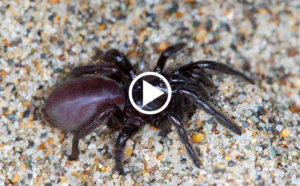Scientists predict that the hurricane season in the Atlantic will bring intense storms to the east coast of the United States. However, the notoriously aggressive tiger shark does not need to swim in search of shelter.
A new study published in the journal Estuarine, Coastal and Shelf Science shows that some large shark species will leave shallow coastal habitats to escape large storms. However, tiger sharks appear to take advantage of rough seas and winds, according to the Guardian.
“They didn’t flinch,” said a researcher.
The researchers used modern equipment to track the activity of tiger sharks. In 2016, Hurricane Matthew hit the northwestern edge of Little Bahama. Scientists found that the tiger shark’s presence in the area was “consistent before and during the storm”.
Matthew is a Category 5 hurricane with sustained winds of 266 km / h. Immediately after the storm, researchers found that “the number of tiger sharks every day almost doubled.”
This contrasts sharply with the great storm resistance of Bulldog Sharks, Knuckle-mouth Sharks, and Great Hammerheads near Biscayne Bay off Miami.
In 2017, a Category 4 hurricane Irma with winds of 209 km / h made landfall in Miami. As the eye of the storm moved 140 kilometers west, “most of the sharks residing in these waters moved away,” the researchers said.
Scientists have found that unlike small species that often flee shallow water during storms, larger sharks do fight.
“I was surprised to see that the great tiger sharks did not evacuate when the storm hit. Their number even increased after the storm had passed. We suspect that the tiger sharks took the opportunity to look for creatures that died in the storm to eat them, ”said Neil Hammerschlag of the University of Miami, co-author of the study.
Scientists predict that climate change will increase the strength and intensity of storms on the east coast. In addition, this condition also causes the migration of great white sharks to new waters, which exposes populations of wild animals to a significant decline.
“Stunned” with the most eye-catching bird, which can fly at 322 km / h
Giant poisonous spider discovered that lives for decades
Busy playing lost, the dog himself went to the police station to report “I am missing”







